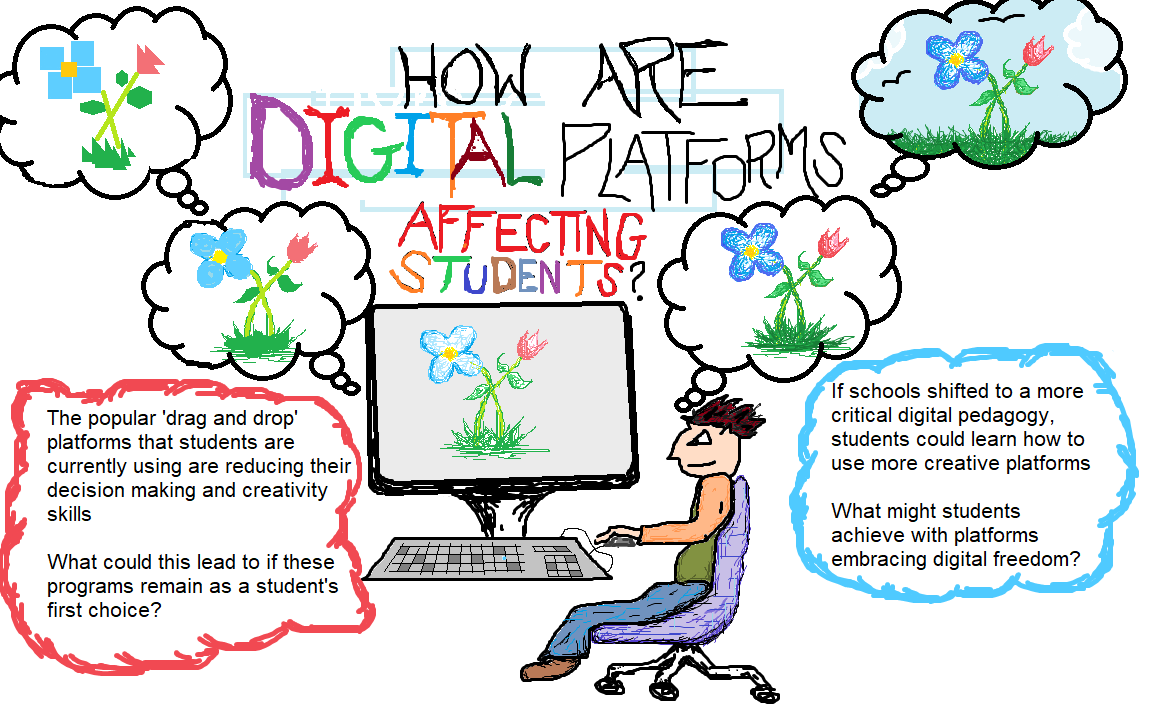For this assignment, I decided to read the article called ‘Digital Ghosts in the Modern Classroom’ by Ashley Hinck. She makes some good points about the way students are choosing to express themselves on digital platforms—ultimately, because it’s the only way they know how to do it. I certainly agree with the author that the education system needs to catch up with the times and help students improve their digital literacy. The fact that students are having trouble to express themselves on a computer means that they are not tapping into their full potential.
Once a more expressive program is mastered, ideas can be portrayed with more accuracy and clarity—but how will be teach students how to create these programs? Not all, but most students would rather do their math homework than learn how to code. I can understand that they would be disinterested in programming since it is such a monotonous process but coding and using a program are two separate fields. I believe that students become more intrigued once a program is already developed and they have the freedom to digitally express themselves. The trouble is getting students familiarized with a program that strives for transparency of emotion. Perhaps there should be a class in the school curriculum dedicated to acquiring this skill. Essentially, schools should be adapting to the digital climate and helping students to improve their digital literacy.
With that being said, I decided to paint a picture for this assignment using Microsoft Paint. I have used this program when I was younger and have always had a lot of fun playing around on it. There is some kind of novelty about old technology that I love—probably why I still play the Nintendo 64. My idea was to start with a simple program like this and then move onto more involved programs for future assignments. I learned some more about the tools in this program which gave me more respect for it, considering its age. For instance, when a brush tool is selected, the edges of each stroke are a lighter colour to make the painting look more realistic. I found this to be very helpful when I attempted to shade my picture; the brush tool helped the final product look more detailed than I had imagined. Also, the magnifying glass made painting much easier. I was able to zoom in and add some extra detail which would not have been possible without zooming in.
Down one path, schools ignore the potential that the digital world has to offer, and leave kids to learn it for themselves. Naturally, they will commit themselves to the programs that are the easiest to use, and their digital expression will suffer. If we take the other route, and help students to acquire the skills needed to use more sophisticated programs, a more transparent form of expression will emerge.
Please don’t laugh at my drawing:

